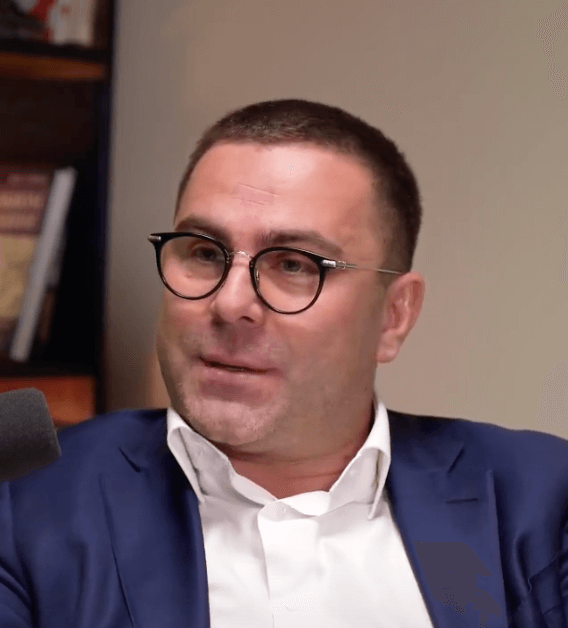По мере того как календарь перелистывается в сторону 2024 года, ветер перемен становится все меньше похож на легкий бриз и все больше на шторм, бьющий по устоям семейной жизни. Недавно опубликованная статистика разводов просто поражает воображение: на каждые 10 свадеб теперь приходится 8 разводов. Это не просто очередная цифра - это мигающий неоновый знак того, что что-то серьезно не так. С таким ошеломляющим соотношением Россия сейчас находится на незавидном третьем месте в мире по количеству расторжений браков. Это суровая реальность, о которой заявила Елена Михайлова, советник генерального директора ВЦИОМ, на недавней пресс-конференции, заставившей многих наблюдателей покачать головой [1].
Речь идет не просто о подсчете графиков и диаграмм, а о том, чтобы понять, почему так много пар прекращают отношения. Конечно, экономические потрясения и необходимость сводить концы с концами сильно влияют на союзы. И да, меняющиеся социальные ценности меняют наше представление о браке, превращая то, что раньше казалось нерушимыми узами, в нечто, что можно бросить, как горячую картофелину, при первых признаках проблем. Но это лишь верхушка айсберга.
Почему развод становится новой нормой в России?
Трудно выделить какого-то одного злодея. Вместо этого мы видим запутанный клубок сил, которые подталкивают пары к тому самому страшному финальному разговору за кухонным столом:
1. Изменение отношения к браку: Прошли те времена, когда брак был прочной крепостью, охраняемой любой ценой. Многие молодые россияне сегодня воспринимают его скорее как тест-драйв - если машина заглохнет, они без колебаний найдут другую.
2. Экономическое напряжение и стресс: Скачки рубля на американских горках, рост цен на жилье и нестабильность в сфере занятости могут превратить даже самых милых молодоженов в изможденных незнакомцев. Когда кошельки становятся тонкими, темперамент часто накаляется [2].
3. Психологическая осведомленность и границы: Современные пары освобождают личное пространство, отказываясь довольствоваться меньшим. Если отношения приносят больше пользы, чем удовольствия, многие предпочитают уйти, а не тратить время на бесконечные конфликты.
4. Разрыв связи: Как ни странно, в мире, где переписываться легко, как дышать, настоящие разговоры по душам становятся все более скудными. Без открытого диалога недопонимание накапливается, как сугробы в сибирскую зиму.
5. Ослабление социальных стигм: Развод больше не является замалчиваемым скандалом. Давление, заставляющее "держаться вместе ради шоу", стало меньше, и пары стали свободнее стремиться к личному счастью - даже если это означает расставание.
Глобальное сравнение: Россия против ЕС, Великобритании и США
Ошеломляющая статистика России - 8 разводов на каждые 10 браков - ставит ее на территорию, с которой мало кто сравнится в других регионах. В Европейском союзе, несмотря на то, что уровень разводов растет на протяжении десятилетий, в целом он колеблется в районе 40-50%. В Великобритании около 42% браков заканчиваются разрывом. В Соединенных Штатах, издавна известных высоким уровнем разводов, показатели фактически достигли плато, часто указываемого в районе 40-50%, а в некоторых районах кривая выровнялась или немного снизилась [3].
Что отличает Россию? Интенсивность и быстрый темп этих общественных изменений. В то время как западные страны десятилетиями постепенно адаптировались, проводя поддерживающую политику и оказывая консультационные услуги, в России преобразования происходят быстрее и более драматично. Экономический ландшафт в сочетании с культурными изменениями создали идеальный шторм, из-за которого стабильный брак кажется скорее броском костей, чем надежной ставкой.
Экономические и социальные эффекты домино
Высокий уровень разводов - это не просто грустная история любви, это пульсация в обществе. Дети могут страдать эмоционально, неся этот багаж во взрослую жизнь и формируя свое отношение к обязательствам. Тем временем социальные службы и правовые системы борются с наплывом дел. Государственная финансовая поддержка матерей-одиночек и разведенных родителей - ежемесячные алименты на ребенка, материнский капитал и алименты по решению суда - облегчает экономическое бремя. Но эта система защиты также может сделать развод менее пугающим, снизив порог для принятия окончательного решения.
Пять советов, как пройти по минному полю в браке
1. Начните с честных разговоров: Не позволяйте мелким обидам перерасти в непреодолимые проблемы. Прозрачность может остановить нисходящую спираль еще до ее начала.
2. Подумайте о профессиональной помощи: Парная терапия не является волшебной палочкой, но нейтральный голос может помочь распутать сложные эмоции и замедлить принятие поспешных решений.
3. Установите реалистичные ожидания: Каждый брак переживает не лучшие времена. Признание того, что неровности на дороге - это нормально, может предотвратить панику, когда все идет не по плану.
4. Работайте над навыками разрешения конфликтов: Научитесь спорить, не целясь в яремную вену. Даже небольшие улучшения в общении могут укрепить шаткий фундамент.
5. Знайте, когда следует обратиться за поддержкой к стороннему специалисту: Если вы зашли в тупик, пригласите надежного друга, члена семьи или посредника, который поможет вам взглянуть на ситуацию с другой стороны.
Три истории успеха: Превращение боли в прогресс
1. От обид к росту: Расставание Анастасии и Павла было неизбежным, но они не позволили горечи определять их будущее. С помощью посредника они выработали справедливый план опеки над дочерью, обеспечив ей чувство семьи.
2. Новое начало для Светланы: После удушающего брака Светлана обрела независимость. После развода она открыла бизнес по дизайну интерьеров, и сегодня она финансово стабильна, уверена в себе и является примером для подражания для своих детей.
3. Путь Сергея к внутреннему миру: После тяжелого разрыва Сергей сосредоточился на самосовершенствовании. Занятия Mindfulness и общение со старыми друзьями помогли ему восстановить эмоциональную жизнь с чистого листа, проложив путь к более здоровым отношениям в будущем.
Последняя мысль
Растущий процент разводов в России - это не просто мрачная статистика. Некогда священный институт брака переосмысливается под давлением экономической неопределенности, меняющихся ценностей и социальной эволюции. В то время как такие страны, как ЕС, Великобритания и США, борются с подобными проблемами - хотя и с более надежными структурами поддержки, - российский путь кажется уникально неспокойным.
В конечном итоге решение этой проблемы требует не просто корректировки политики или публичного рукоплескания. Она требует честного разговора, как наедине с собой, так и на публичной арене. Если понимание и сочувствие возьмут верх, возможно, пары смогут обрести твердую почву в эпоху, когда стабильность слишком часто ускользает из их рук. А в мире, где технологии продолжают развиваться, у ворот стоит новый страж - приложения, ориентированные на отношения, такие как SoulMatcher, обещают помочь людям найти партнеров, которые действительно соответствуют их ценностям и жизненным целям, и, возможно, сдержать волну будущих разводов.
Цитаты
[1] Пресс-конференция с Еленой Михайловой, советником генерального директора ВЦИОМ, Москва, 2024 год.
[2] Росстат. "Статистика браков и разводов в России", Официальный статистический отчет, 2024.
[3] Евростат. "Показатели браков и разводов в ЕС", Ежегодный статистический обзор, 2023 год.













